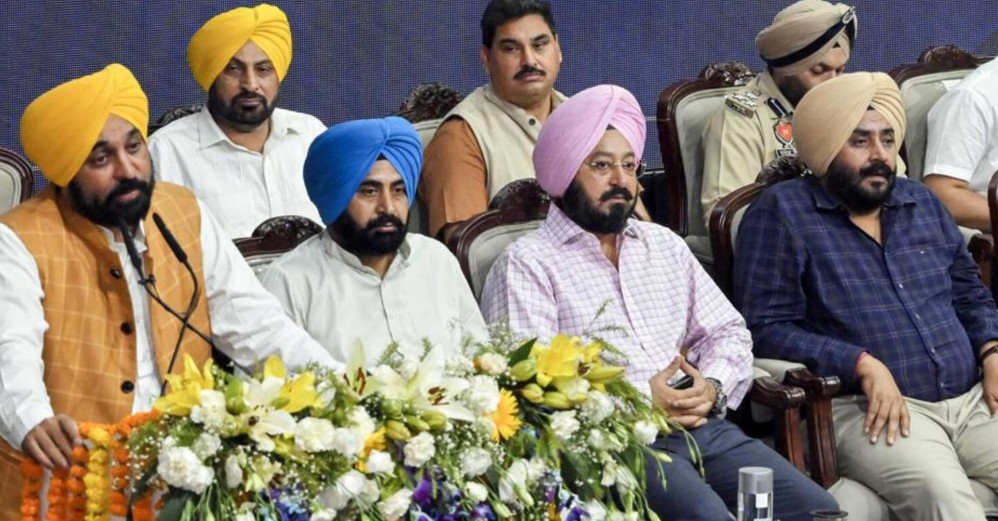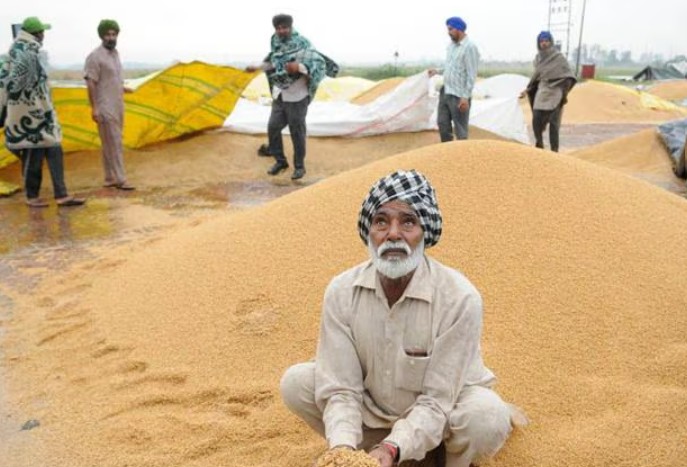In a move that has ignited fresh tensions across the agrarian landscape of Punjab, the State Cabinet, under the leadership of Chief Minister Bhagwant Mann, has formally approved a new Land Pooling Policy, a decision that comes amidst simmering discontent and vocal opposition from various farmer organizations. The policy, touted by the government as a progressive step towards planned urban development and industrial growth, is viewed by a significant section of the farming community as a thinly veiled attempt at land acquisition, threatening their livelihoods and deeply rooted connection to their ancestral agricultural lands. The approval signals a potential escalation in the ongoing “tiff” between the state administration and the very farmers who form the backbone of Punjab’s economy.
The newly sanctioned Land Pooling Policy is designed as an alternative to traditional, often contentious, land acquisition methods. Under this model, landowners voluntarily surrender their fragmented land parcels to a designated government authority, such as the Punjab Urban Development Authority (PUDA) or other specific development bodies. In return, instead of upfront monetary compensation for the entire plot, farmers are promised a portion of the developed land – typically a combination of residential and commercial plots – within the new layout, once the infrastructure development is complete.
As per the policy details emerging from the cabinet meeting, a landowner contributing one acre of agricultural land is expected to receive a 1,000-square-yard residential plot and a 200-square-yard commercial plot in the fully developed area. For larger contributions, such as nine acres, the policy suggests a return of three acres of developed land for group housing, implying a one-third return ratio for large-scale development. The government asserts that this model allows farmers to become direct stakeholders in the development process, enabling them to benefit from the appreciated value of the developed land, potentially yielding a return up to four times the existing market rate.
The Punjab government maintains that this land pooling policy is crucial for fostering transparent, planned, and sustainable urban and industrial development across the state. Minister Aman Arora, while addressing the media post-Cabinet meeting, emphasized that the policy is entirely voluntary, ensuring that not even “a single yard of land will be forcibly acquired” without the landowner’s explicit consent. The policy, which will initially be implemented in 27 cities and towns across Punjab, is also aimed at curbing the rampant proliferation of illegal colonies, which, according to government surveys, have mushroomed to over 14,000, leading to unplanned growth and a lack of basic amenities.

From the government’s perspective, this policy is a strategic shift from the old land acquisition approach, which was often fraught with delays, high compensation costs, and allegations of corruption. By involving landowners as partners, the government aims to reduce upfront expenditures, streamline the process of land assembly for mega projects like industrial parks, urban estates, and critical infrastructure, and attract significant private investment into the state. They argue that this innovative approach will ultimately benefit the common man by ensuring the development of well-planned areas with proper infrastructure, including roads, sewerage, electricity, and parks, amenities often lacking in unauthorized settlements. Furthermore, the policy outlines a provision for an interim annual payment of ₹30,000 per acre for up to three years until the developed plots are handed over, and it also explicitly states that farmers can opt out of the agreement if they choose.
Despite the government’s assurances of transparency, voluntariness, and lucrative returns, the policy has met with immediate and strong condemnation from various farmer unions, notably factions of the Bhartiya Kisan Union (BKU) and the Kisan Mazdoor Sangharsh Committee (KMSC). Their skepticism stems from a complex interplay of factors: historical distrust, deep emotional attachment to land, and legitimate concerns about livelihood security. For generations, land in Punjab has been more than just an economic asset; it is an identity, a symbol of heritage, and the primary source of sustenance for millions. The idea of pooling fertile agricultural land, even if “voluntarily,” for urban development projects strikes at the very heart of this agrarian identity.
Farmer leaders argue that while the policy is termed “voluntary,” subtle pressures and the allure of high returns could compel economically vulnerable farmers to part with their land, potentially leading to their alienation from agriculture. They express grave doubts about the promised “400% profit,” pointing to past experiences where compensation for acquired land often fell short of market realities or was delayed for years, pushing farmers into financial distress. The conversion of agricultural land into residential or commercial plots, even if lucrative in the long run, displaces farmers from their traditional occupation, raising questions about alternative livelihood opportunities and vocational training for those who may lack skills beyond farming. The fear of being left with high-value plots but no immediate income stream, coupled with potential market fluctuations, weighs heavily on their minds.
Concerns are also being voiced about the practicalities of getting developed plots within the stipulated timeline of “not more than one and a half years.” Previous land acquisition projects, such as those for national highways or industrial corridors, have often witnessed protracted disputes over compensation and lengthy delays in project completion, leaving farmers in limbo. The farmer unions demand iron-clad guarantees, not just vague assurances, regarding timely possession of developed plots, their market value, and robust grievance redressal mechanisms. They also question if the policy truly benefits small and marginal farmers, who might find it difficult to wait for years for returns or to navigate the complexities of real estate development. The opposition, including the Shiromani Akali Dal, has also joined the chorus of dissent, accusing the AAP government of orchestrating a “land grab in disguise” and favoring corporate interests over the welfare of farmers.
The approval of the Land Pooling Policy marks a critical juncture for Punjab. While the state government is eager to fast-track development, attract investment, and streamline urban expansion, it faces the formidable challenge of building trust with a farming community that remains deeply suspicious of policies impacting their land. The past year has already seen several farmer protests over land acquisition for various infrastructure projects, often leading to confrontations with authorities and allegations of forced evictions and inadequate compensation. The recent incidents of clashes between farmers and police in districts like Gurdaspur over land acquisition for the Bharatmala highway project serve as stark reminders of the volatile nature of such issues.
To successfully implement this policy, the Punjab government will need to go beyond mere declarations of voluntariness. It will require proactive and transparent engagement with farmer unions, offering clear, legally binding agreements, expedited timelines, comprehensive livelihood packages, and robust independent dispute resolution mechanisms. The future of this policy, and indeed Punjab’s development trajectory, will hinge on the government’s ability to bridge the widening gap of trust and convince the farming community that their welfare is paramount, even as the state embarks on its journey towards modern urbanization and industrialization. The balance between progress and protecting the foundational agrarian identity of Punjab will be the ultimate test.


